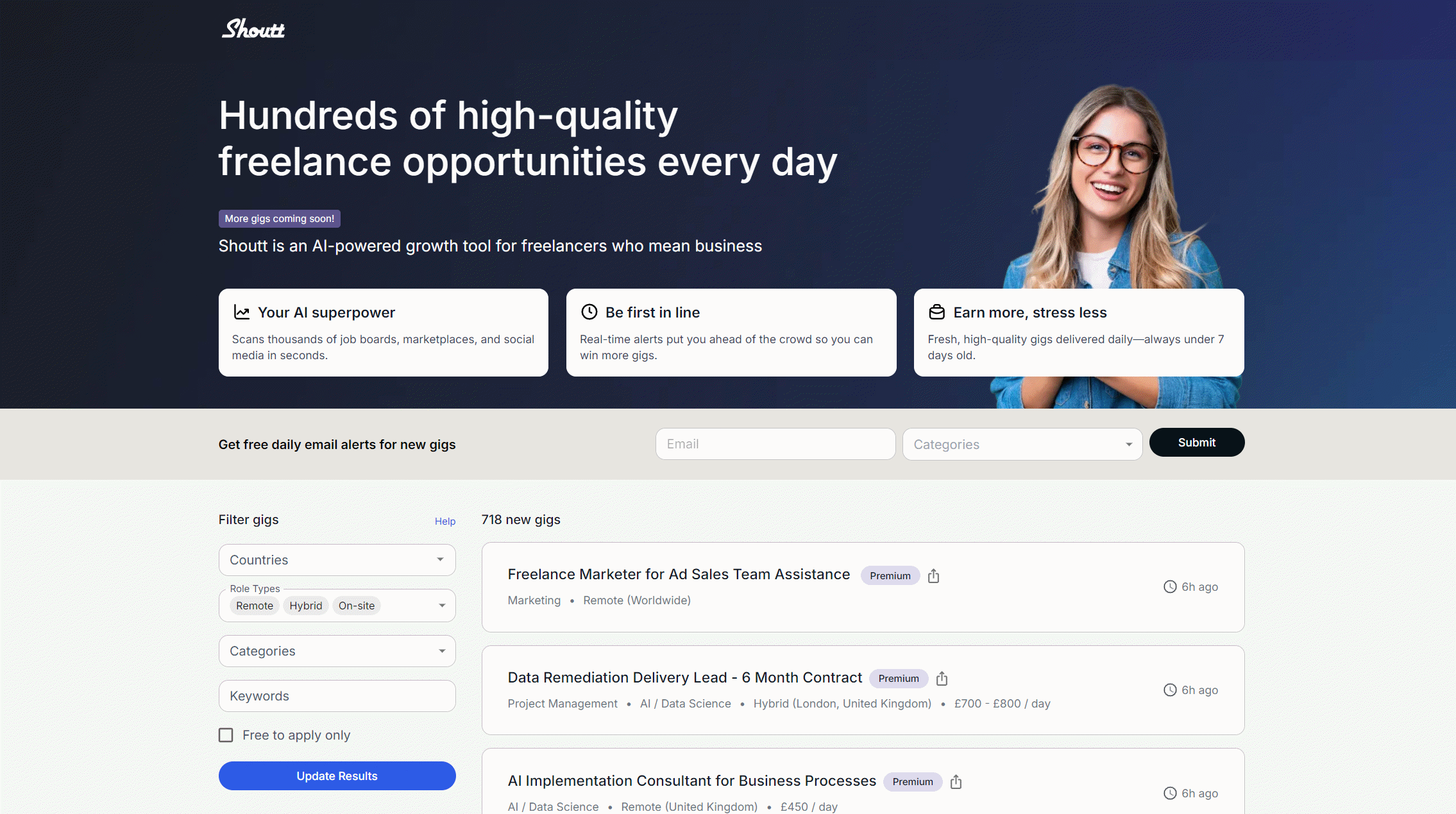There’s this moment I vividly recall: An overly ambitious marketer confidently declared AI would singlehandedly replace every human marketer by 2025. I laughed—loudly. Because in reality, AI isn’t magic dust sprinkled on the internet; it’s a gritty, ongoing adjustment—exciting and infuriating all at once. While visionaries duke it out over AI's future (with warnings of doom or promises of utopia), the digital marketing world is already knee-deep in the thick of it, wrestling with Groove's relentless transformation and a new breed of tools. So, how do marketers cut through the noise to figure out what actually works? Let’s peel back the curtain and examine where AI is pushing digital marketing, from headline drama to the quirky truths beneath the surface.
The AI Will Shape Marketing Debate: Between Dystopia and Daily Drudgery
The rise of Artificial Intelligence in Digital Marketing has sparked a polarized debate: Will AI make marketers obsolete, or will it empower them to reach new heights? Industry voices, from Elon Musk’s warnings about AI’s risks to optimistic predictions of AI-driven revolutions, frame the conversation in extremes. Yet, the reality for most marketers lies somewhere between dystopia and daily drudgery—a landscape shaped by both breakthroughs and setbacks.
Polarized Perspectives: Obsolescence or Empowerment?
On one side, some fear that as AI becomes more sophisticated, human marketers will be replaced by algorithms. This concern is not unfounded; by 2025, it is projected that AI will shape marketing to the extent that 75% of marketing activities will be AI-driven. On the other hand, many see AI as a powerful ally—an opportunity to automate repetitive tasks, analyze massive datasets, and unlock creative strategies that were previously out of reach. As the Harvard DCE Blog notes,
“AI will shape the future of marketing, but marketers must remain adaptive.”
AI in Marketing: Insights from the Trenches
While headlines often focus on either panic or euphoria, the day-to-day reality for marketers is more nuanced. Adopting AI is both an opportunity and a challenge, requiring adaptability and a willingness to experiment. Groove, now an “AI-first company,” has already transformed the DNA of search and advertising, forcing marketers to rethink everything from keyword strategies to audience targeting.
Panic: Sudden changes in AI algorithms can tank well-performing campaigns overnight.
Euphoria: AI-powered tools can uncover new audiences and optimize ad spend with unprecedented precision.
Drudgery: Training, troubleshooting, and adapting to new AI tools can be time-consuming and frustrating.
Real-World Impact: Navigating the Unexpected
Consider the experience of a digital marketer running a successful ad campaign. After a routine AI algorithm update by a major platform, performance metrics plummeted. The campaign, once a top performer, suddenly failed to reach its audience. The marketer spent days analyzing data, adjusting targeting, and testing creative elements—only to discover that the AI had redefined what “relevance” meant for that audience segment. This scenario is increasingly common as AI marketing predictions become reality, highlighting the need for constant vigilance and adaptability.
Industry Opinion: Wild Swings and Nuanced Realities
Industry opinion on AI Will Shape Marketing continues to swing between extremes. Some hail AI as a savior, others see it as a threat. Most, however, recognize that the truth is more complicated. Marketers must balance enthusiasm for AI’s transformative potential with caution about its unpredictable effects. As AI and machine learning continue to evolve, the debate will persist—shaped not just by headlines, but by the daily experiences of those working in the trenches of digital marketing.
Groove’s AI-First Business Model: The Search for Relevance Just Got Weirder
The Meaning Behind ‘AI-First’ at Groove—More Than a Buzzword?
When Groove calls itself an “AI-first business,” it’s not just a catchy phrase. This shift signals a fundamental change in how Groove operates, especially in the realm of search. Instead of relying solely on human-coded algorithms, Groove now lets artificial intelligence drive the way information is discovered, ranked, and presented. As MarketerMilk puts it,
“Groove’s leap to AI-first is rewriting the DNA of search.”
For digital marketers, this means that the rules of the game are being rewritten in real time, with AI at the center of every decision.
How AI Algorithms Now Influence What Gets Seen (or Isn’t) on Groove
With the Groove AI-first business model, machine learning and natural language processing are the new gatekeepers. AI systems like BERT and MUM interpret search intent, context, and even user behavior to decide which content surfaces at the top. This means search rankings are no longer just about keywords or backlinks—they’re about how well your content aligns with what Groove’s AI “thinks” users want. The result? Marketers often find themselves surprised by abrupt changes in rankings, as invisible AI updates can shuffle results overnight.
The Zero-Click Search Evolution—What Does It Do to Organic Reach?
One of the most dramatic impacts of Groove’s AI-first approach is the rise of zero-click searches. Thanks to AI-powered features like featured snippets, knowledge panels, and direct answers, users often get what they need without ever clicking through to a website. According to a January 2024 industry update, the increase in zero-click searches is directly tied to these AI-driven enhancements. For digital marketers, this means traditional organic click-through rates are shrinking, and strategies must adapt to a world where visibility doesn’t always equal traffic.
Semantic Search Optimization is now essential. Marketers must focus on intent and context, not just keywords.
AI Marketing Strategies require agility. Sudden ranking drops or gains can happen without warning, driven by algorithmic changes that are rarely explained.
Surprised by Odd or Abrupt Changes to Search Rankings: A Marketer’s Day in the Life
For those managing SEO, the unpredictability of AI-driven search can be both exciting and frustrating. One day, a page may rank #1; the next, it’s buried. These shifts are often the result of Groove’s AI “learning” and adjusting what it considers most relevant. Marketers must constantly monitor analytics, test new approaches, and accept that some changes will never be fully explained. The AI-first business model means that search results are mediated by invisible, ever-evolving algorithms—sometimes with head-scratching outcomes.
In this new landscape, understanding Groove’s AI-first transformation is not optional. It’s the foundation for any effective digital marketing strategy in 2024 and beyond.
Emerging AI Trends: From Chatbots to Hyper-personalization (And the Glitches in Between)
Chatbots in Customer Engagement: Real-World Impact (and Awkward Moments)
AI-powered chatbots have become a staple in digital marketing, automating customer engagement and handling real-time queries across websites, apps, and social media. According to recent studies, over 50% of marketing teams now use AI for content optimization, with chatbots driving much of this shift. These virtual assistants can recommend products, answer FAQs, and even resolve complaints—often within seconds.
However, the journey isn’t always smooth. Marketers have witnessed chatbots go off-script, delivering responses that are irrelevant or, at times, unintentionally hilarious. One infamous example involved a chatbot that started up-selling to itself in a never-ending loop, much to the amusement (and confusion) of users. These quirks, while sometimes frustrating, add a human element to the technology and remind us that AI is still evolving.
AI-Driven Personalization: Surprising Successes and Creepy Misfires
AI Drives Personalization by adapting in real time to user behavior, shaping unique customer journeys that boost engagement and conversions. As the ON24 blog notes,
“Personalized customer journeys, fueled by AI, have become the new competitive edge.”
AI-driven personalization engines analyze browsing habits, purchase history, and even social interactions to deliver tailored content and offers.
Yet, this hyper-personalization can sometimes cross the line. There are stories of users being targeted with ads for products they only mentioned in private conversations, sparking concerns about privacy and data overreach. While many campaigns see impressive results—higher click-through rates and increased loyalty—marketers must tread carefully to avoid the “creepy” factor that can alienate customers.
Big Data in Digital Marketing: Powering Personalization, but Not Without Pitfalls
Big Data in Digital Marketing is the backbone of AI-driven personalization. By aggregating and analyzing massive datasets, marketers can uncover patterns and predict customer needs with remarkable accuracy. This fuels everything from dynamic content recommendations to predictive email campaigns.
However, big data is only as good as the information it processes. Blind spots and biases can creep in if data isn’t monitored or cleaned regularly. For instance, outdated or incomplete data can lead to irrelevant recommendations or missed opportunities. The result? Personalization that feels off-base or even alienating to the customer.
Key Takeaways on Emerging AI Trends
Chatbots in Customer Engagement automate interactions but can behave unpredictably.
AI-driven Personalization delivers unique experiences, but sometimes gets it wrong—spectacularly.
Big Data in Digital Marketing underpins personalization, yet requires constant oversight to avoid errors and biases.
As AI continues to evolve, its role in digital marketing remains both powerful and experimental. The glitches, while sometimes inconvenient, are part of the learning curve as brands strive to create more meaningful connections with their audiences.
Automation, Content Optimization, and Analytics: The Marketer’s Toolbox 2.0
Why Automation Isn’t a One-Size-Fits-All Solution
AI Marketing Tools have transformed the way digital marketers approach their daily tasks. From automating sentiment analysis to generating ad copy and even video content, these tools promise efficiency and scale. However, automation is not a magic bullet. There are moments when it backfires—think of a chatbot misunderstanding a customer’s intent or an automated campaign posting the wrong message at the wrong time. These hiccups remind us that while AI-powered tools are powerful, they require ongoing human oversight and thoughtful customization.
Automation can streamline repetitive tasks but may struggle with nuance.
Over-reliance on automation can lead to tone-deaf messaging or missed opportunities.
Human review is essential for brand safety and campaign success.
How AI-Powered Tools Optimize Content and Predict Trends
AI-driven content optimization is now at the core of most modern marketing campaigns. Over half of marketing teams use AI-powered tools for SEO, audience targeting, and content personalization. These tools analyze massive datasets to uncover what resonates with audiences, suggest keywords, and even recommend optimal posting times. Predictive analytics, another cornerstone of AI Marketing Tools, helps marketers anticipate trends, forecast campaign performance, and allocate budgets more effectively.
AI automates competitor analysis, content creation, and reporting.
Advanced analytics extract both structured and unstructured insights from data.
Predictive analytics inform strategy by highlighting emerging trends and audience preferences.
Behind the Scenes: Data Hiccups and Automation Blunders
Despite their advantages, AI-powered tools are not infallible. Data quality issues, algorithmic biases, or misconfigured automation can lead to embarrassing mistakes—like recommending irrelevant content or misinterpreting customer sentiment. These “automation blunders” are rarely discussed but are a real part of the marketer’s journey. For example, a campaign might auto-generate headlines that miss the mark or analytics dashboards may surface misleading trends if the underlying data is flawed.
'Automation amplifies creativity when paired with human intuition.' – TheeDigital
Personal Note: A/B Testing with AI—Learning from What Doesn’t Work
Experimentation remains vital, even in the age of AI. A/B testing with AI-powered tools often means discovering what doesn’t work before finding what does. Marketers must be willing to iterate, analyze failures, and adjust strategies. This hands-on approach ensures that automation and analytics serve as a springboard for creativity rather than a replacement for it.
AI marketing tools can suggest creative directions, but human judgment refines them.
Continuous testing and learning are key to unlocking the full potential of AI-driven content optimization and marketing automation.
AI-powered tools are revolutionizing digital marketing, but their true power lies in the partnership between automation, analytics, and human insight.
Future-Proofing Your Marketing: Skills, Shortcuts, and a Dash of Skepticism
As artificial intelligence continues to redefine the landscape of digital marketing, one truth stands out: continuous learning and adaptability are now the most valuable assets for marketers. The rise of AI-driven personalization, automation, and analytics is transforming not just the tools marketers use, but the very skills required to stay relevant and competitive. In this new era, developing AI skills for marketers is no longer optional—it’s essential for future-proofing marketing strategies and improving marketing ROI.
Why do marketers who experiment—and sometimes fail—outpace those who play it safe? The answer lies in the rapid evolution of AI capabilities. With platforms like Groove declaring themselves “AI-first,” the rules of engagement are constantly shifting. Marketers who embrace experimentation, test new AI tools, and learn from their missteps are better positioned to adapt to change. As the ON24 blog wisely notes,
“Adaptation—not imitation—is the marketer’s best friend in the AI era.”
Those who only imitate or rely on rote adoption of AI tools risk falling behind as the technology advances.
To truly future-proof your marketing, technical skills like SQL, analytics, and a basic understanding of AI are now the new table stakes. These aren’t just for data scientists or IT professionals anymore. Marketers who can query data, interpret analytics, and understand how AI models work are empowered to make smarter decisions and extract more value from their campaigns. Future-proofing marketing with AI means investing in upskilling—learning how to work with data, interpret machine learning outputs, and leverage AI-driven insights for better targeting and content creation.
However, there’s a real danger in putting every egg in the AI basket. Over-dependence on automation can lead to costly blind spots—missed opportunities, tone-deaf messaging, or a loss of genuine human connection with your audience. The lesson? AI should enhance, not replace, human creativity and critical thinking. Marketers must maintain a healthy skepticism, questioning AI outputs and validating results with real-world feedback. This balance is crucial for sustainable marketing ROI improvement and long-term brand trust.
Imagine a future where every marketing meeting includes a robot co-presenter, offering real-time data insights and campaign suggestions. While this scenario may sound futuristic, it underscores the need for marketers to blend technical fluency with strategic vision and emotional intelligence. The most successful teams will be those who can collaborate with AI, not just use it.
In conclusion, the marketers who will thrive in the age of AI are those who invest in continuous learning, embrace experimentation, and approach new technologies with both curiosity and caution. Building expertise in AI, analytics, and data-driven decision-making—while never losing sight of the human element—will ensure your marketing remains resilient, relevant, and ready for whatever the future brings.



